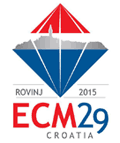Two climates
Croatia has two climates – typical subtle Mediterranean along the coast, and a less gentle, continental in the interior. The coastal climate consists of hot, dry, sunny summers, and relatively mild – though sometimes wet and windy – winters. Average temperatures during summer lie between 25 °C and 35 °C. Winters are obviously cooler, although temperatures rarely get below 5°C. Anything colder than this is considered a freak weather, though not impossible. The continental climate exists in the interior of Croatia which means that winters can be pretty cold, with temperatures often falling below 0°C. Snow is very likely, and can be pretty heavy during the winter. Summers, on the other hand, can very often be sweltering with temperatures often reaching 30°C
Air-condition
Air-conditioning is becoming more and more common in Croatia , so wherever you are during the summer, it is more than likely that your accommodation (hotel or private) may well have it, providing you with a bit more comfort in summer. Air-con is also omnipresent in shops, public institutions, offices, cafes, restaurants and bars both along the coast and in the interior of Croatia.
Best time to go
Along the coastline, late August and September still usually have glorious, sunny weather with warm temperatures, and the sea will also still be warm enough for swimming. May is also a great month to visit Croatia, as temperatures have already risen to a pleasant level and you’ll have more and more sunny days, but will be without any of sweltering heat that will make you want to lie down every half an hour. And, what is important, during both May and September you’ll avoid the ever growing crowds, especially on the illustrious Croatian beaches.
The “Bura”
One reasonably famous – or most likely, infamous – aspects of Croatian weather that you may have heard mentioned, or even experienced yourself, is the “bura”. The bura is a very strong north-easter wind that blows towards the coastline, and is felt strongest along the Velebit mountain range (between Rijeka and Zadar). It normally occurs in winter, though some of its effects can be felt all year round. The strong wind occurs due to the two different climate types clashing and, as such, the wind is considered unpredictable and strong strokes can happen rather suddenly. Wind speed can reach over 125 miles/200 kilometres per hour. Unsurprisingly, the bura causes disruption to those sailing off the coast, though serious problems to traffic due the Bura can also occur on land, especially on the roads and highways from the interior towards to coastal areas.
More info
For more on the Croatian climate and weather forecasts, visit the excellent website of the Croatian National Meteorological and Hydrological service.





